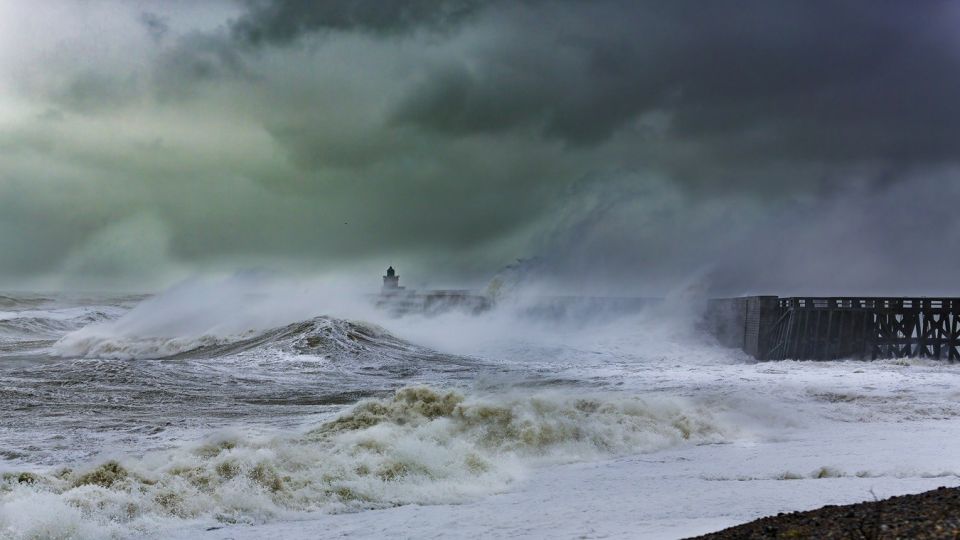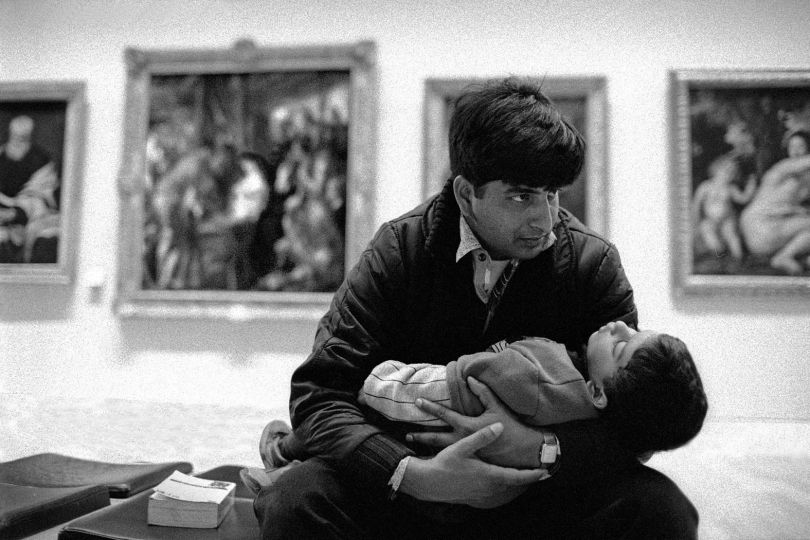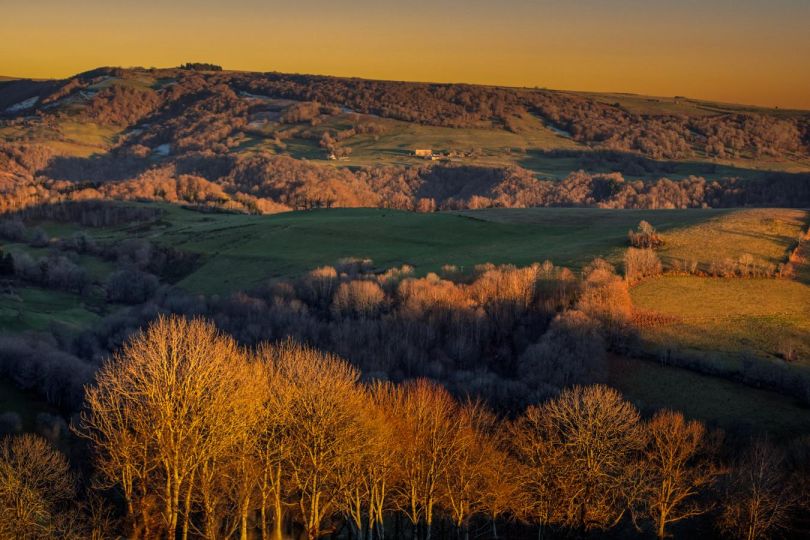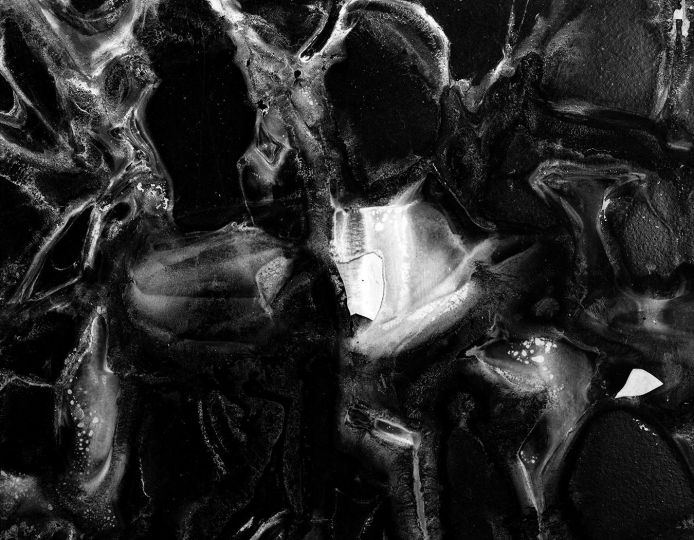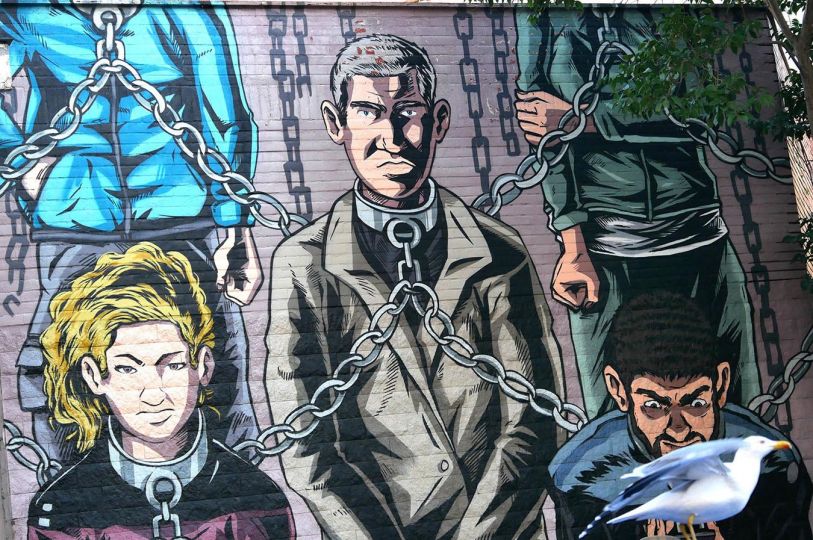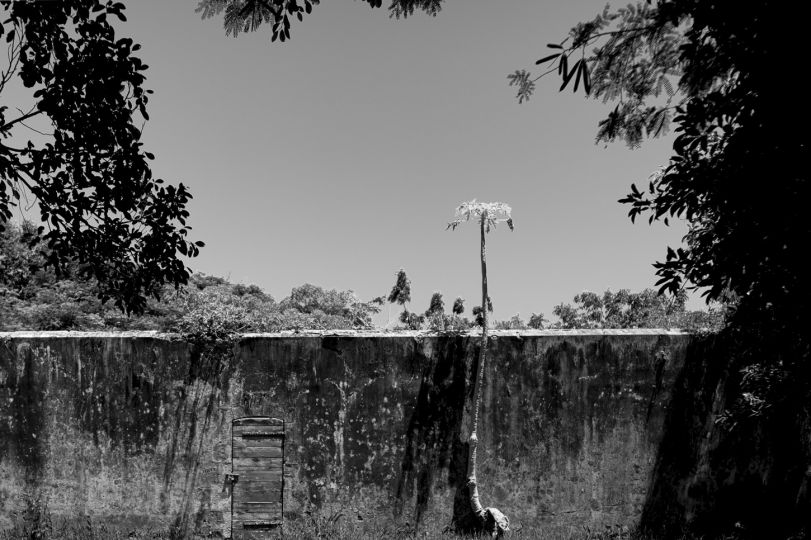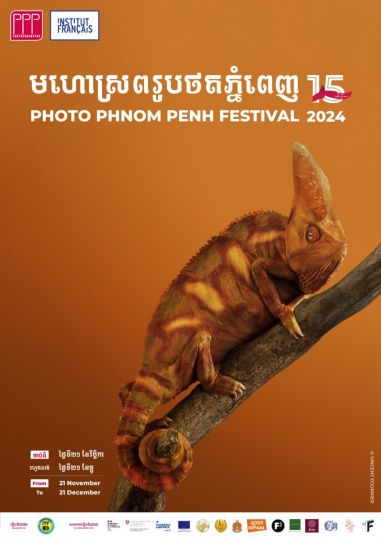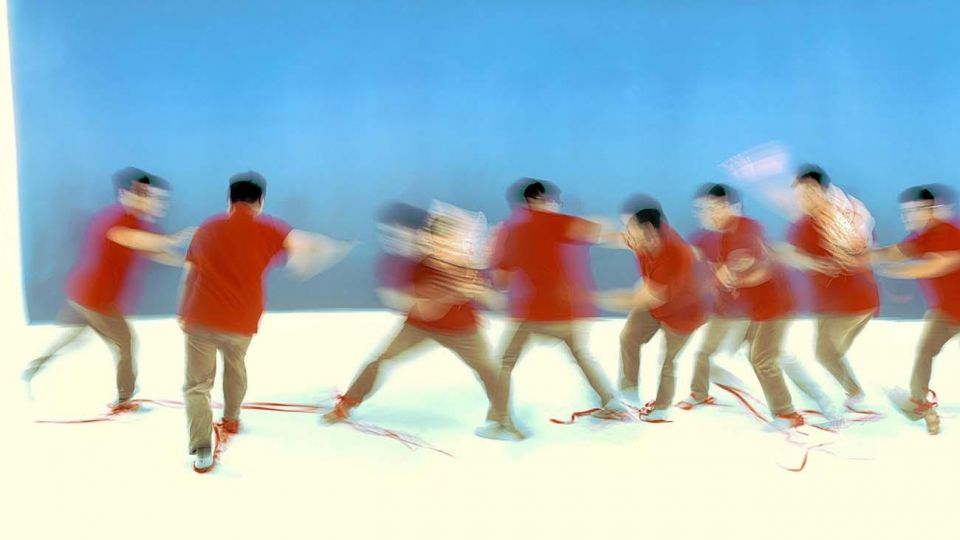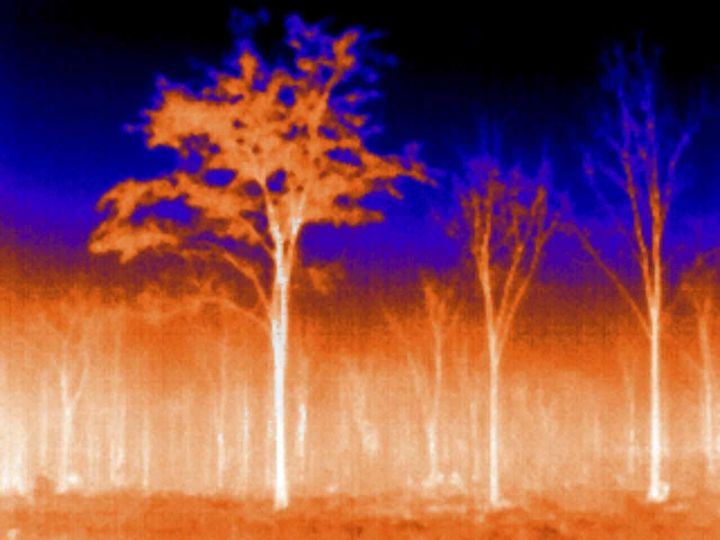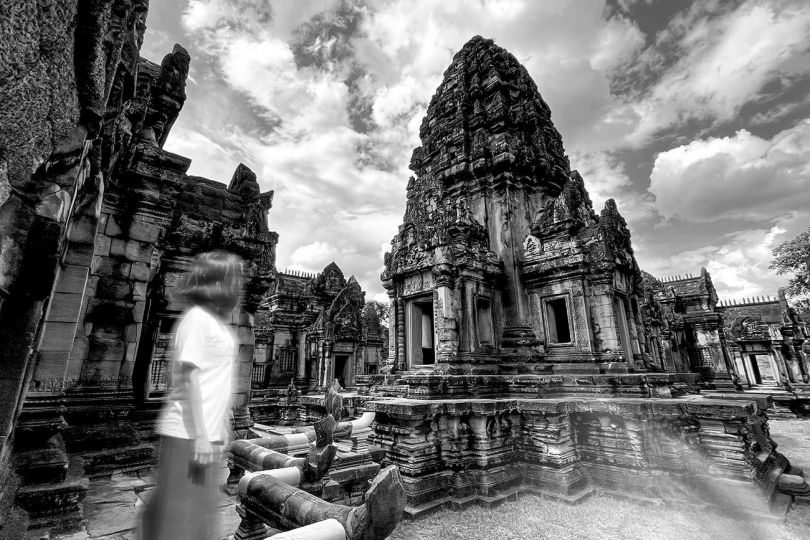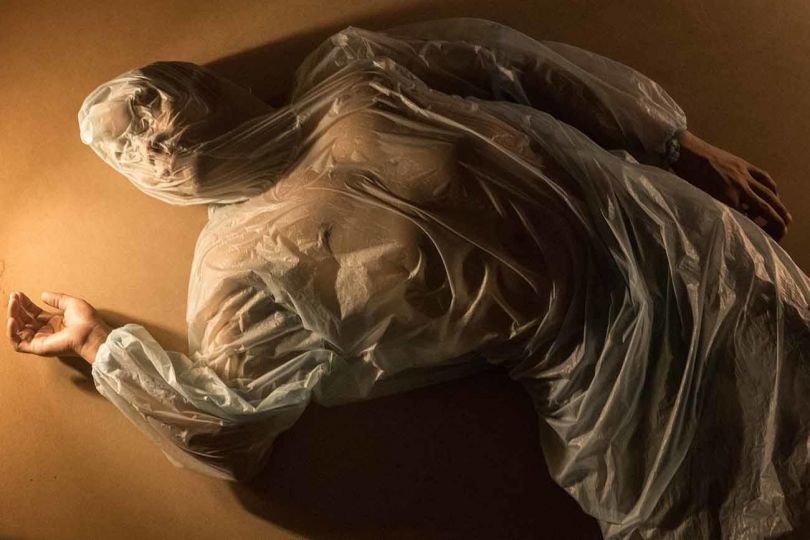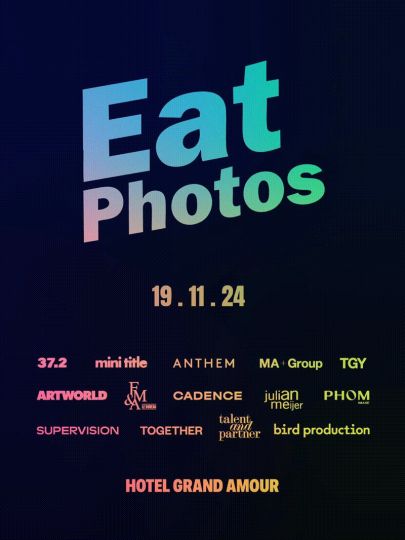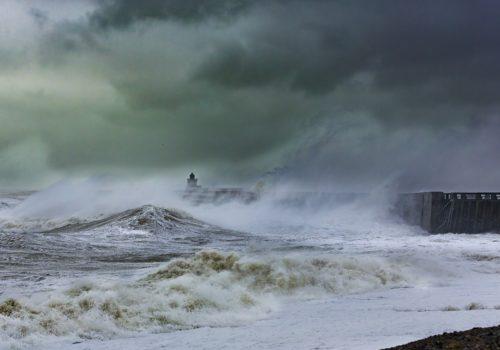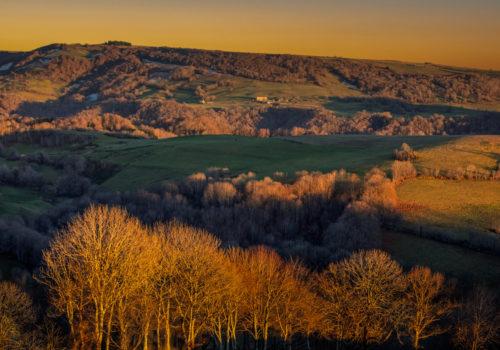As part of Denver’s Month of Photography series, Robischon Gallery presents “Far Between,” an exhibition of photography and photo-based work by highly influential as well as emerging artists who explore a range of imagery of a surreal, fantastical or ethereal nature. The artists’ work on view offers entry into distinctive dream-like or cinematic worlds, further illuminated by a myriad of inhabitants who evoke a sense of mystery and narrative.
KAHN +SELESNICK
Acclaimed New York/British collaborative duo Nicholas Kahn and Richard Selesnick utilize photography, painting, drawing, prints and sculptures to all be in service of their startlingly original visual narratives. Together since the 1980s, Kahn + Selesnick have purposefully invented inexplicable, yet visually invigorating historiographies – adventures in which there is no division between fact and fiction. As in all of their past series including “Apollo Prophesies,” “Eisbergfreistadt” and “City of Salt”, the artists build onto select cultural facts with sheer fantasy—with the intent of reflecting an even larger scope of reality.
Kahn + Selesnick’s most recent on-going series, “Truppe Fledermaus and the Carnival at the End of the World” furthers the artists’ language as it takes its inspiration from Italian philosopher Giulo Camillo’s 1550 Memory Theater. The enigmatic series tells the visual tale of a chimerical cabaret troupe comprised of bats, Greenmen and death dancers traversing the outskirts of imaginary and recognizable towns where their enigmatic performances play repeatedly for no one. As a metaphor for contemporary society’s on-going disengagement from the larger world, the central role of the Greenmen in the tale brings both truth and hope to the cast of characters as they relate to their environment. The Greenmen, while supportive to the players are, inextricably linked to Nature and act as a stand-in symbol of humankind’s unconscious relationship to it. Through Kahn + Selesnick’s signature cinematic approach, the artists consistently present the engaged viewer with seemingly inexhaustible imagery and its potential for metaphor; a kind of mesmerizing experience to reflect a modern world.
Graduates of Washington University at St. Louis, Kahn + Selesnick have been awarded artist residencies at Addison Gallery of American Art, Andover, Massachusetts; the Djerrasi Artist Program, Woodside, California; and Toni Morrison’s Atelier Program at Princeton University, New Jersey. Their work has been shown in more than eighty solo exhibitions throughout the US and Belgium and in group exhibitions in China, France, Germany, Monaco, and Norway. Museum exhibitions include: Brooklyn Museum of Art, Smithsonian Institution, Chicago’s Museum of Contemporary Photography and Field Museum, Overbeck-Gesellschaft, Lübeck, Germany and Cape Cod Museum of Art. Their work is in the permanent collections of the LA County Museum of Art, Boston Public Library, Philadelphia Museum of Art, Fogg Museum of Art, National Portrait Gallery, and Museum of Fine Arts, Houston. Their latest commissioned series “Mars Revisited,” features an uncanny resemblance between certain terrestrial terrains and Martian topographies joined by the artists for staged, fictionalized alien encounters was most recently on view at the Boise Art Museum.
HALIM AL KARIM
Iraqi-born, internationally-celebrated artist Halim Al Karim offers innovative work from his recent series entitled “White Ash.” As in his previously exhibited series such as, “Lost Memory”, “Eternal Love” and the seminal 2009 works from “The Witness Archive”, Halim Al Karim speaks from an expansive and distinctive point of view. All of the artist’s work has been heavily influenced by his many challenging and soulful experiences in his native country of Iraq; prompting each series to hold within it a unique expression of transcendence. In his “White Ash” series, Al Karim invites the viewer to investigate the deeper universal questions surrounding identity and the illusion of self, yet in a somewhat altered context than in his earlier work. Each dream-like figure shown expresses a different psychological portrait of humanity which, according to the artist, reflects those individuals amongst us who possess an ability to retreat, yet remain present, while in the face of some of life’s harshest realities. Like white ash itself – the remainder from an alchemical change from burning – Halim Al Karim’s work alludes to or represents a kind of condition of essential change: what was, is now transformed and stands as a reflection of spirit, with its expansive sense of being. This awareness of a broader sense of Self is what the artist believes is inherent within each individual and accessible at any time.
A native of Najaf, Iraq, Halim Al Karim studied at the Academy of Fine Arts in Baghdad and the Ritveld Academy in Amsterdam. He represented Iraq at the 54th Venice Biennale in 2011 – Iraq’s first reentrance onto the cultural world stage after a 30-year absence. The artist has exhibited in France, Holland, Lebanon, Jordan, and the United States. Museum collections include the Princessehof National Museum for Ceramics, Leeuwarden, Netherlands; the French Cultural Center in Amman, Jordan; the Arabic Museum of Contemporary Arts, Doha, Qatar; L’Institut du mond Arabe, Paris, France; and the Sorsuk Museum, Beirut, Lebanon along with inclusion in the Saatchi Collection in London, UK, Victoria and Albert Museum, UK, George Bush Presidential Library and Museum, Texas, USA and the United States Embassy in Baghdad, Iraq.
RUUD VAN EMPEL
Internationally shown Dutch artist Ruud van Empel constructs his elaborate works through staged photography, digital enhancement and collage. Van Empel’s progressive contemporary techniques and dynamic compositions reflect the artist’s broad artistic journey into graphic design, theater and television, while serving well his uniquely charged expression of innocence and a natural sense of wonder. Recognized for such series as “World” and “Moon and Venus,” van Empel is noted for his visions of perfectly posed children in contrast to their often wild or Edenesque surrounds. Each image of Paradise, made luminous by the artist’s rich digital color palette and technique, often present the children either alone, in pairs or large groups, while caught in the viewer’s gaze or stilled by the magical moments of beginnings, amidst idyllic flowers and trees. From one series to the next, a different mystery is framed and complex unnerving narratives may arise, though in van Empel’s vision, beauty is a constant. Similarly, in the artist’s “Dawn” series, van Empel entices us with glimpses of seemingly enchanted characters; dewy skinned children set amidst digitally collaged landscapes that create a striking balance between the real and the unreal, the possible and the impossible. As in many of his series, the artist’s works function as uncanny richly-hued, digitalized “fairytales,” created through the mastery and manipulation of digital technology and his use of layered fragments taken from an archive of thousands of the artist’s own photographic images. Upon viewing the pristinely rendered images, van Empel’s masterful approach leaves no obvious trace of his progressive and hard-won Photoshop technique. Instead, the viewer is immediately drawn into van Empel’s subtly conflicting and always charged worlds which simultaneously appear impossibly illusory and undeniably hyper-real.
Ruud van Empel has exhibited in major museums and galleries around the world with exhibitions including the Groninger Museum, Netherlands; Torch Gallery, Amsterdam; TZR Galerie, Dusseldorf; The Chelsea Art Museum, NYC; Museum of Photographic Arts, CA; Art Cologne, Germany; Museum de Valkhof, Netherlands; The George Eastman House, NY; Galeria Berini, Barcelona; Quatrieme Biennale Internationale, Belgium; Frisia Museum, Netherlands, CB Collection, Tokyo, and at the Museum Kunst Palast, Düsseldorf, Germany.
DAVID ZIMMER
David Zimmer’s enigmatic conflations of video and vitrine feature natural imagery of trees, birds, insects, water or weather joined with elements both technically progressive and repurposed from a bygone era. Within their contained environments, the artist’s fusion of nature-based forms with LED technology ignites a thoughtful consideration of the world around and humankind’s relationship to it. In Zimmer’s most exhibited series, Finch Studies, the varied sounds of birds first invite investigation through delicate branches to discover tiny feathered creatures existing in a disarming wood or, as in other series, in remote and compelling industrial locales. Each work is painstakingly created from hundreds of hours of artist filmed video footage, as well as utilizing the artist’s photography as background. In addition, extensive research is involved toward securing the appropriate vintage glass vessels and salvaged hardware. Uniquely conceived and composed, Zimmer’s work and elaborate visual language is generous toward the viewer as it contemplatively balances on a kind of dream threshold, ripe for interpretation. Evocative and haunting, the artist’s intimate moving images of wind-lashed branches or animated finches and their melodious chirp of bird song seem at once like Nature sublime to behold; yet simultaneously may present a cautionary tale where Nature, if not respected, may exist only as flickering memory.
Colorado artist David Zimmer has a B.A. from the University of Missouri. His work has been included in numerous national private and public collections as well as several museum exhibitions including Museum of Contemporary Art, Denver, Boulder Museum of Contemporary Art, Boulder, CO and The Bemis Center, Omaha, NE. A large-scale video work was part of Denver’s 2013 Nick Cave performance of “Music for Animals,” as a joint event between MCA Denver and the Denver Art Museum. Zimmer’s solo exhibition at MCA Denver entitled “Another Victory over the Sun” was the centerpiece of an expansive show which featured only artworks that were self-illuminating within the David Adjaye-designed museum building.
CHI PENG
The dynamic work of Chinese photographer, Chi Peng, is emblematic and expressive of his ancient culture’s inherent contradictions, amplified by the expansive freedoms, technology and prosperity of their contemporary world. In his many photographic series, the artist has utilized his own image as the sole figure presented. Whether as a stand-alone figure or shown in multiple, the intent of the artist is to explore many pathways toward the meaning of self and the relationship to an ever-evolving culture within an ever-changing world. Known for such fantastical images of armies of winged, nude figures, soaring over golden fields and contemplative, black suited men facing one another on opposing shorelines, Chi Peng’s celebrated meticulously created digital photographs, bring the viewer into the unexpected.
In keeping, are the images from Chi Peng’s dramatic “Monkey King” series in which an overtly cinematic approach is embraced in order to meet, head on, the contemporary and mythological within Chinese culture. Based on the wily creature of legend and told from the Monkey King’s perspective, with whom the artist identifies, Chi relied on the recreation of authentic costumes and Peking Opera face-paint to convey a strong sense of tradition in an arena in which his digitized amalgamations startlingly illustrate the seventy-two different guises of the Tale’s magical beast. Originally written in the 1600’s, Chi re-interprets the story that told the tale of the pilgrimage of a monk who traveled to India to bring sutras back from Buddhist masters to Tang Dynasty China. The tale of the ancient magical creature was kept alive through the centuries and later made into a popular animated character in the 1980s further extending the reach of the legendary figure. Yet, in Chi Peng’s work, it is not a literal retelling of the myth, but rather, it is a vehicle for narrative – one that conflates the adventures of the Monkey King and the artist’s own experience within a modern context. Chi Peng’s transcendent, layered imagery is electrified with activity which revels in the now and acknowledges what came before. This duality, the artists conveys, communicates his belief that by being vigilant and taking stock in what is essential within the human condition, we are able to see anew that which enriches and ignites the potential for change within an individual, their country and the world.
Chi Peng graduated in 2005 from the Central Academy of Fine Art in Beijing, with Photography as his main subject. During his early years of study the artist distinguished himself as an influential artist within his country attributed in part to his progressive photographic techniques and large scale applications. Technical prowess combined with startling subject matter, furthered by the attention of the important Chinese art critic and curator Feng Boyi, prompted many group and solo exhibitions within China over the years, as well as in The Netherlands, Germany, France, Japan, Korea and the U.S.A in New York, Texas and Colorado. Robischon Gallery first exhibited the work of Chi Peng in 2006.
CHRISTINE BUCHSBAUM
Colorado emerging artist Christine Buchsbaum explores a deeply felt world of her own making. Utilizing photography to document her staged surreal, eccentric and expressive performances for the camera, Buchsbaum connects the viewer to a shared dream. The camera lens frames the compelling emotional terrain – an image of a bedroom with an old world bed, stripped down to the mattress and its bedcoverings bound and suspended above – is ripe for the viewers’ interpretation as to whether it’s narrative is one of promise or not. This balance of opposites is an active pursuit in Buchsbaum’s work as the real and the fake are inexplicably linked and what is unsettling is also at its core, sensual. The artist’s hard won set-ups – at the bottoms of swimming pools or under an overpass – require time and commitment aside from the complexities of the numerous stories the artist longs to tell. In the end, each evocative image makes it clear that an underlying narrative exists – though with intent, Buchsbaum offers a kind of universal truth that the story may never need to be told. The artist states, “My work is a performance-based documentation of personal experience – a reshaping of events that shaped me – strange mysteries of a strange world; narratives of an underlying consciousness.”
Christine Buchsbaum has a BFA from Rocky Mountain College of Art and Design. She was selected as a Visiting Artist and Artist in Residence at La Napoule Art Foundation, Mandelieu-la-Napoule, France, an award winner at Artotique Biennial in London and a juror’s pick in numerous other exhibitions. She has exhibited at Denver’s RedLine Gallery and Colorado’s Arvada Center, among others, and Buchsbaum’s work has been featured in the Huffington Post, Denver Post, Art in America, Art, Ltd., American Contemporary Art Magazine, Zing Magazine and more.
WANG NINGDE
With his striking photographs, Chinese artist Wang Ningde locates the viewer in strange worlds, both benign and subversive. An early participant in the fast rising phenomena of contemporary art in China, Wang’s imagery addresses a kind of theatre of the absurd, as its subjects clash with the changing times. In many of the artist’s series the figures feel like misdirected actors; those who take the stage in heavily applied or inappropriate amounts of makeup, only to be positioned within either odd or humbly built stage sets. Each work appears as fantasy, but with puzzlement and peculiarity in equal measure, the views quickly shift back and forth from one of suspect to pure folly, never to be clearly deciphered. Wang, through his imaginative lens, continues to capture the mood and the tension between the past and an ever-changing contemporary China, as he had expressed early on through his notable black and white series, entitled “Some Days”. As an artist who works not only in photography but also more recently in video and installation artwork, Wang Ningde poetically challenges the viewer as well as himself to decipher the unanswerable. With great intent, the artist’s visual language directs all to peel back the layers of memory and the social facade to investigate and expose the more complicated and disconcerting issues of a culture’s past and humanity’s collective psyche. This mission, inherent within the artist’s work, communicates in considerable variety the importance of seeing behind the mask in order to view, more clearly, the world as it is today.
Wang Ningde was born in 1972 in Liaoning province and graduated from the photography department of the Lu Xun Academy of Art in 1995. After graduating, he moved to southern China where he worked for a decade as a photojournalist during the period of China’s explosive economic and cultural transformation. Robischon Gallery first showed the artist’s work in the U.S. in 2006.
FESTIVAL
As part of Denver’s Month of Photography
Far Between
From March 19th to May 2nd, 2015
Robischon Gallery
1740 Wazee Street
Denver, CO. 80202


